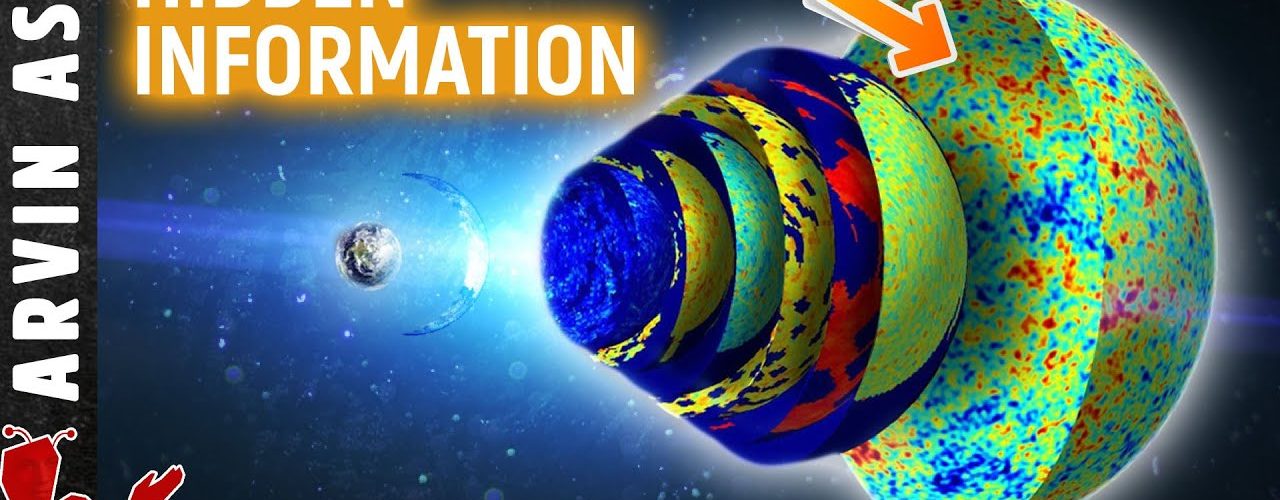Chapters:
0:00 – Speed of light and the past
1:24 – Cosmic Microwave Background
2:55 – What the early universe looked like
3:24 – What caused transparent universe
4:45 – Why is CMB not Gamma Rays?
5:51 – CMB – perfect Black Body
6:02 – What is a black body?
7:02 – Temperature of CMB
7:31 – Isotropy of the universe
8:15 – Why are there galaxies?
9:22 – Where did anisotropy come from?
10:14 – Evidence for cosmic inflation
11:14 – Why is the universe flat?
13:07 – Evidence for Big Bang
13:54 – Can we know anything prior to CMB?
Summary:
If we look as far out as possible, we would see a uniform glow of low level radiation in all directions. This is called the cosmic microwave background, or CMB. It is the oldest light in the universe. And it can tell us a lot about its early history.
Before the CMB, the universe was an opaque and featureless. About 380,000 years after the big bang, the universe cooled to around 3000 Kelvin, allowing electrons to combine with protons to form atoms. The universe then became transparent, because photons were free to travel from one end of the universe to the other, without being scattered by electrons.
Why is this light from the very early universe microwave light, instead of higher energy gamma rays? 3000 K was not energetic enough to be gamma rays. In the 13.7 billion years it took for the light to reach earth, space expanded, causing the wavelength of photons to increases to microwaves.
The CMB is the most perfect black body every measured. A black body absorbs all incoming electromagnetic radiation. But Black bodies also EMIT photons in the form of thermal radiation, called black body radiation.
The spectrum of photons emitted from black bodies matches the expected spectrum of an ideal black body for 2.726 Kelvin. So this is temperature of the universe’s background radiation.
The fact that the black body spectrum is almost perfect, suggests that the temperature is evenly distributed, suggesting that the universe was isotropic and homogeneous when the CMB was formed.
This means that the early universe was the same in all locations and in all directions, when the CMB was formed.
The isotropy and homogeneity resulted in a universe we see today where the average density of galaxies is the same throughout the universe and does not change much with distance or direction.
Why are there galaxies, solar systems, and planets at all? Although the universe was pretty isotropic, it was not perfectly so. It has a small anisotropy. Temperature of the CMB is 2.7 Kelvin +- 0.00003, a variation of 1 on 100,000. This anisotropy led to the seeds which have grown to the large-scale structure of the universe we see today.
The imperfections that led to the overall structure of the universe, are believed to stem from quantum fluctuations in the early universe. The fluctuations led to the fact that some places had a very slightly higher matter density than other places.
The fact that CMB is almost perfectly isotropic also supports the theory of cosmic inflation. If the universe expanded exponentially it would have stretched out space very fast evening out any significant imperfections.
The CMB also reveals that the curvature of the universe is probably flat. Curvature can be determined by gauging how much the CMB light has been deflected or “gravitationally lensed” while passing through the universe over the past 13.8 billion years.
If the universe was curved in any way, the temperature variations would appear distorted compared to the actual size that we observe with our telescopes.
In addition to flatness, the fact that there is a microwave background at all, is significant evidence that the Big Bang actually happened, because this leftover radiation is exactly what we would expect.
#CMB
#cosmicmicrowavebackground
You might ask, if we can’t see further back than 380,000 years after the big bang, is there an information barrier that prevents us from knowing anything about the universe prior to the CMB?
No because light is not the only thing that can carry information. Gravity waves may be able to tell us more in the future.







